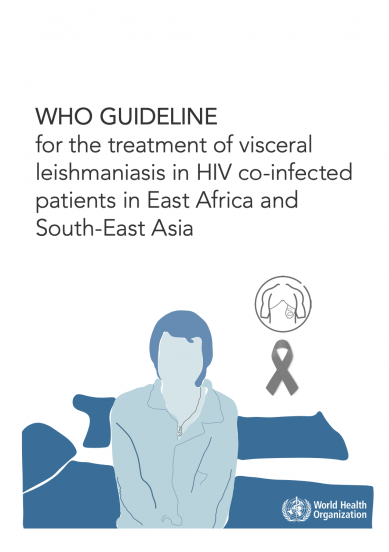
WHO guideline for the treatment of visceral leishmaniasis in HIV co-infected patients in East Africa and South-East Asia
Overview
The leishmaniases are a group of diseases caused by Leishmania spp., which occur in cutaneous, mucocutaneous and visceral forms. They are neglected tropical diseases (NTDs), which disproportionately affect marginalized populations who have limited access to health care. HIV co-infected patients with Leishmania infection are highly infectious to sandflies, and an increase in the coinfection rate in an endemic area is likely to increase the effective infective reservoir.
Leishmania and HIV reinforce each other, posing clinical and public health problems. In areas where the endemicity of HIV and Leishmania overlap, people living with HIV are more likely to develop visceral leishmaniasis (VL), possibly due to reactivation of a dormant infection or clinical manifestation after primary infection. VL is an AIDS-defining condition, as HIV and Leishmania both suppress the immune system, resulting in more severe VL disease, higher rates of relapse and treatment failure, more toxicity of drugs and higher mortality rates than from either infection in isolation. Patients characteristically have high disseminated parasite loads. VL negatively affects responses to antiretroviral therapy (ART), and co-infected patients are difficult to cure, especially when their CD4 cell count is < 200 cells/mm3, as they typically relapse.
Leishmania–HIV coinfection was first reported in the mid-1980s in southern Europe and has since been reported in as many as 45 countries.


